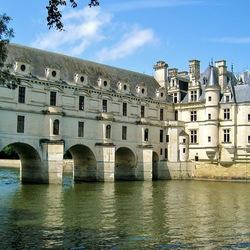Mukachevo, Transcarpathia
Palanok Castle or Mukachevo Castle is located on a mountain of volcanic origin 68 m high and covers an area of 13 930 m². The exact date of the foundation of the castle is unknown, but in documents that date back to the 11th century, it is already mentioned.
From 1396 to 1414, the castle was owned by the Podolsk prince Fyodor Koriatovich. He significantly increased the size and strengthened the castle, turning it into his residence. An 85-meter well was cut in the middle of the rock.
During the XV-XVI centuries, the castle was in the hands of various rulers, who carried out further work on the construction and strengthening of the castle. At that time, there were already 14 towers in the castle's defense system, and in the upper part there was a large palace.
In 1633, the Mukachevo castle was acquired by the Transylvanian prince Gyorgy I Rakoczi with the right of inheritance. The princes of the Rakoczi dynasty turned the castle into the capital of their principality and owned it until 1711.
From 1703 to 1711, the castle was the stronghold of the national liberation war of the Hungarian and all other peoples inhabiting Transcarpathia against the Austrian authorities.
After capturing the castle, the Austrian troops reconstructed it and made it the most powerful fortress in the east of the Austrian Empire.
In 1782, a political prison of the Austrian monarchy was opened here, in which over 20 thousand prisoners were held for over 100 years.
In 1805, the troops of Napoleon Bonaparte marched through the Austrian lands, occupied Vienna and defeated the armies of the third coalition in Moravia.
In such a turbulent environment, Mukachevo Castle, as the most fortified fortress in the southeast of the Austrian Empire, became a reliable refuge for the Crown of St. Stephen (or the Hungarian Holy Crown), which is still considered one of the main symbols of Hungarian statehood. In 1805 - 1806, the relic was kept within the walls of the castle, and thus, it may have been saved from disappearing without a trace.
In July 1847, the famous Hungarian poet Sandor Petofi visited the castle-prison.
During the period of the Czechoslovak Republic (1919-1938), troops were stationed in the castle. During the Second World War, the castle was occupied by Hungarian troops. After liberation in 1944, Transcarpathia became part of Soviet Ukraine. Today, the Mukachevo Castle houses a historical museum.
Share the jigsaw puzzle
| Pieces | 150 |
| Size | 900x600 |
| Complexity | simple |
| Added | Glizinija |
| Published | 10/8/14 |
| Players | 18 |
| Best time | 00:08:41 |
| Average time | 00:24:21 |




















Jigsaw puzzle comments
Add a comment